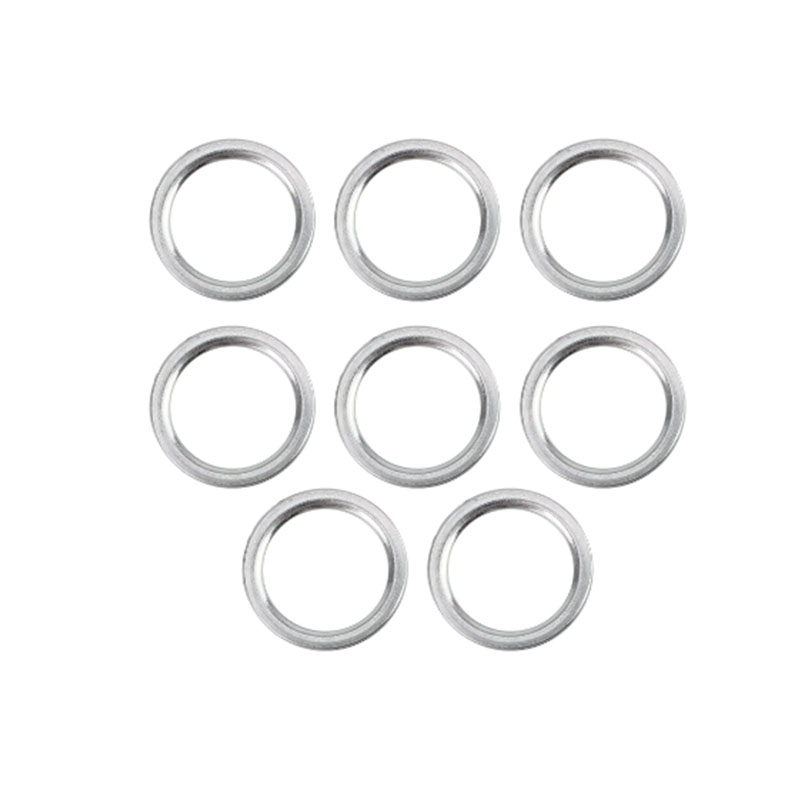Main Pulley Oil Seal Replacement and Maintenance Guide for Optimal Performance
Understanding Main Pulley Oil Seals Importance, Types, and Maintenance
In the realm of machinery and automotive engineering, oil seals play a crucial role in ensuring the optimal performance and longevity of equipment. Among these, the main pulley oil seal is particularly significant. This component is responsible for preventing oil leakage, maintaining pressure, and ensuring proper functioning of the pulleys within various mechanical systems.
What is a Main Pulley Oil Seal?
A main pulley oil seal is a mechanical device designed to seal the space between two moving parts, specifically where the pulley shaft protrudes from a housing. This seal is typically made of durable materials, such as rubber, silicone, or polyurethane, which are capable of withstanding varying temperatures and pressures. Its primary function is to prevent lubricant from leaking out and dirt or contaminants from entering the mechanism, which could lead to increased wear and tear.
Importance of a Main Pulley Oil Seal
The main pulley oil seal plays an essential role in the overall efficiency of machinery. By preventing oil leaks, it helps maintain the proper level of lubrication, which is critical for reducing friction and overheating in moving parts. An effective oil seal can enhance the system's performance, reducing the risk of breakdown due to lubrication failure. Additionally, by keeping foreign contaminants at bay, the oil seal helps to prolong the life of the engine or machinery components, minimizing maintenance costs and downtime.
Types of Main Pulley Oil Seals
There are several types of oil seals used in conjunction with main pulleys, each designed for specific applications and conditions. Some common types include
1. Lip Seals These feature a flexible lip that makes contact with the shaft, providing a tight seal while allowing for some degree of shaft movement. They are widely used in engines and heavy machinery.
main pulley oil seal

2. Radial Seals Designed to handle pressure from the inside out, radial seals are effective in maintaining lubrication and preventing leakage in rotating machinery.
3. Slip-on Seals These seals are installed without bonding to the housing or shaft, making them easy to replace. They are typically used in applications where frequent maintenance is expected.
4. Integrated Seals These seals combine both sealing and bearing functions, providing an all-in-one solution for certain applications.
Maintenance and Replacement
Regular maintenance checks are essential for the longevity of main pulley oil seals. Signs of wear, such as oil leaks or unusual noise from the pulleys, should prompt immediate inspection. When performing maintenance, it is crucial to
- Inspect the Seal Look for any visible signs of wear or cracking. A damaged seal can lead to oil leaks, which compromise the entire system. - Check for Proper Installation Ensure that the oil seal is properly seated and that there are no contaminants affecting its integrity.
- Replace When Necessary If the oil seal shows signs of wear or damage, it should be replaced promptly. Neglecting this can lead to more severe engine issues and costly repairs.
Conclusion
In conclusion, the main pulley oil seal is a vital component in ensuring the efficiency and reliability of mechanical systems. Understanding its function, types, and maintenance requirements is crucial for anyone involved in machinery and automotive engineering. By maintaining the integrity of the oil seal, operators can enhance performance, reduce downtime, and increase the lifespan of their equipment. Regular inspections and timely replacements can make all the difference in avoiding costly repairs and ensuring seamless operation.
-
Understanding the Front Main Engine Seal: Purpose, Maintenance, and Installation
News Jul.29,2025
-
Understanding O-Rings and Seal Rings: Types, Applications, and Custom Solutions
News Jul.29,2025
-
Understanding Crankshaft Oil Seals: Rear Seals, Pulley Seals, and Their Role in Engine Integrity
News Jul.29,2025
-
The Importance of Front and Rear Crankshaft Seals in Engine Performance and Oil Management
News Jul.29,2025
-
Crank Oil Seals: Functions, Types, and Cost Considerations in Engine Maintenance
News Jul.29,2025
-
A Comprehensive Guide to O-Rings and Seals: Types, Materials, and Global Applications
News Jul.29,2025
-
Mastering Diesel and Performance Engine Maintenance: A Guide to Critical Oil Gaskets
News Jul.28,2025
Products categories















